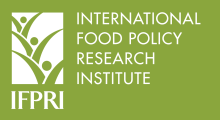Resource information
Current trends in demography, agricultural production and rural environment in the developing countries suggest that so-called marginal lands must play a larger and probably growing role in food supply and economic development for the foreseeable future. To fulfill this critical role, public policy towards these lands needs to be revised. A key policy focus should be to strengthen incentives for local land users to not only maintain, but to improve the natural resource base for food and fiber supply. Such land-improving investments" are needed to reduce production and subsistence risks and permit more intensive use without degradation. Under population and market pressure, one can expect an endogenous process of intensification, through land improvements, tenurial and institutional changes and "re-ordering" of the landscape. But this process is not automatic. Factors influencing the pace and scale of land transformation include: farmer knowledge of degradation of the degrading resource; incentives for long-term investment; capacity to mobilize resources for land investment; level of economic returns to such investment; and factors affecting the formation and function of local groups to help mobilize resources and coordinate landscape-level change. Current policies often work to constrain, rather than support, this process. New research is needed to support policy change for "marginal" lands.


